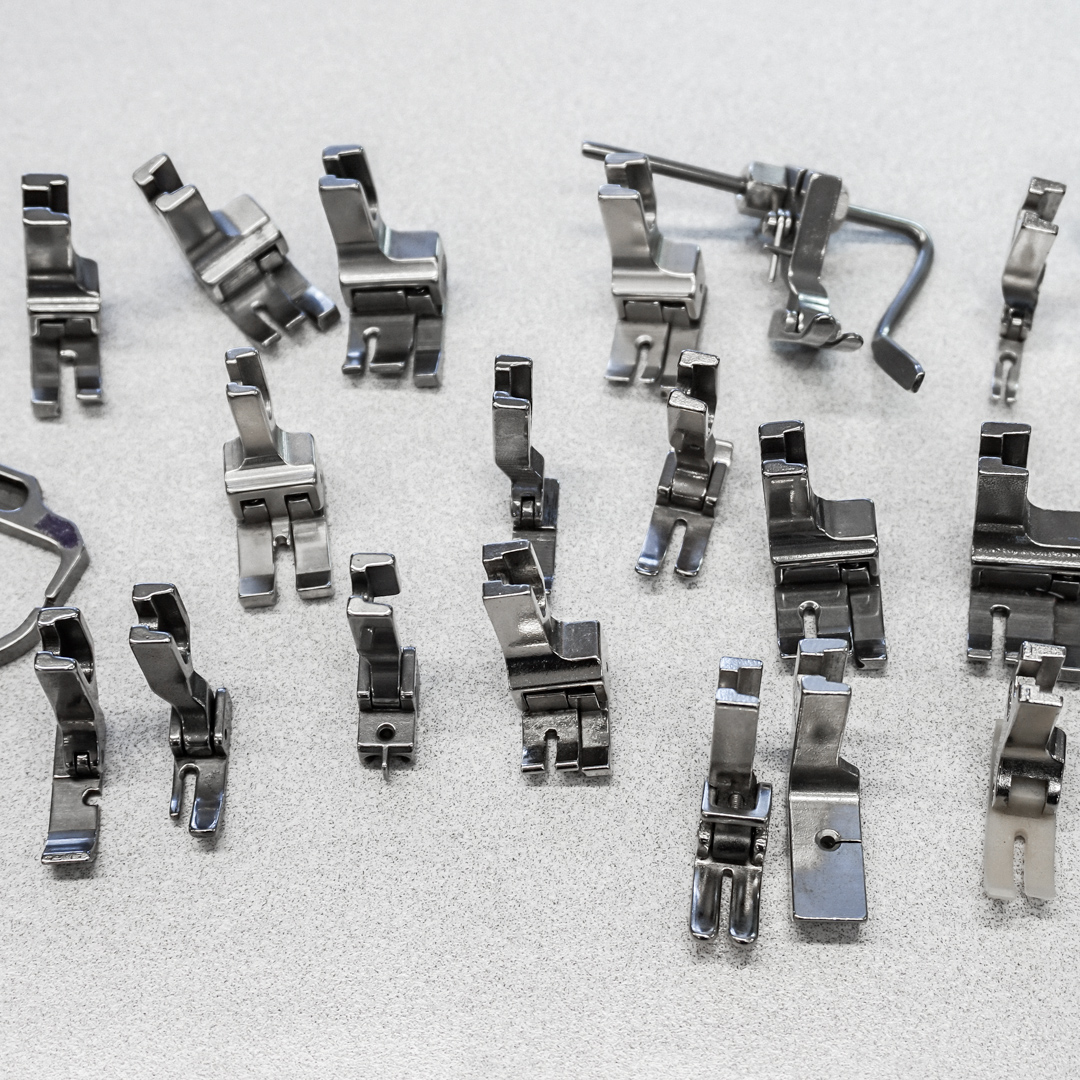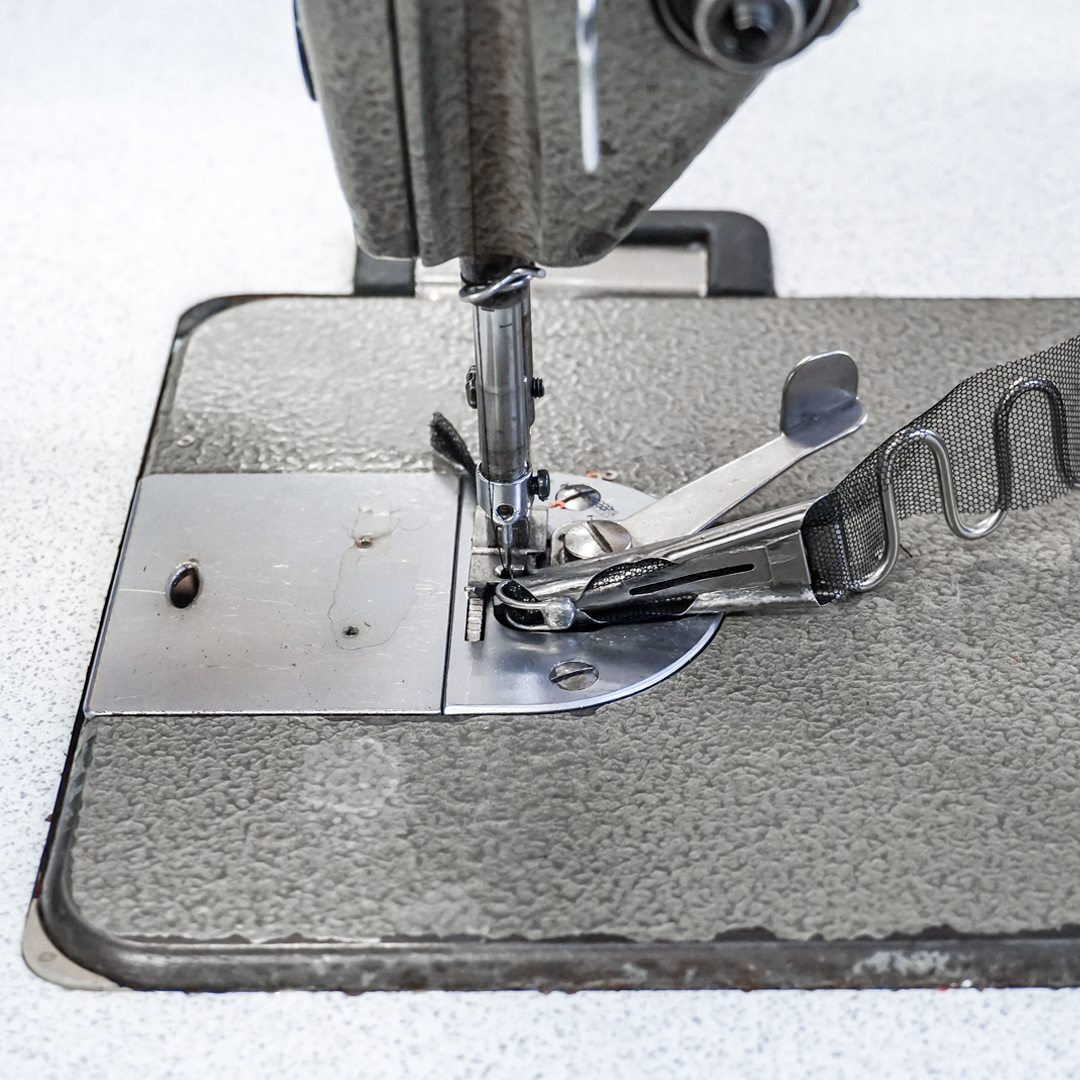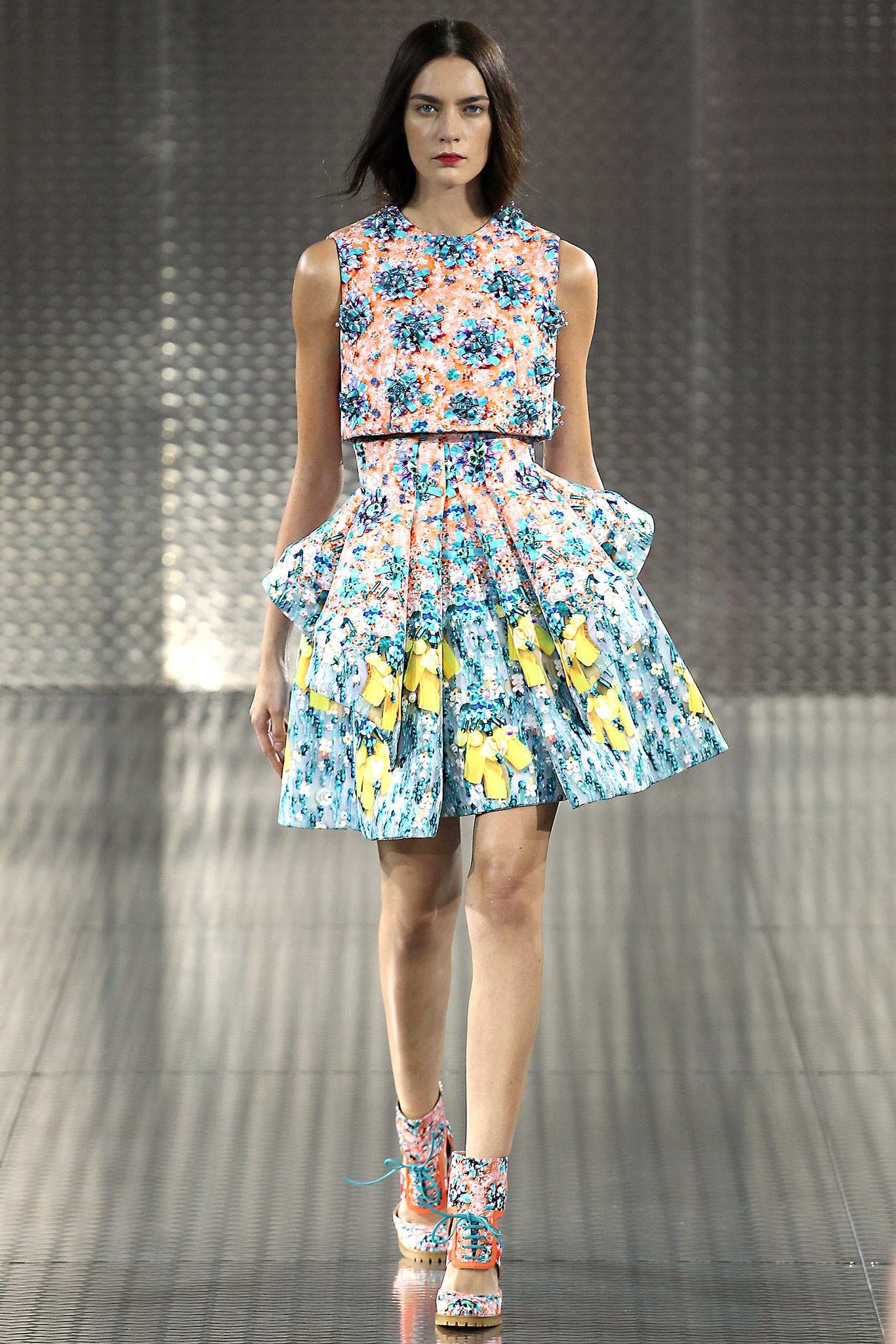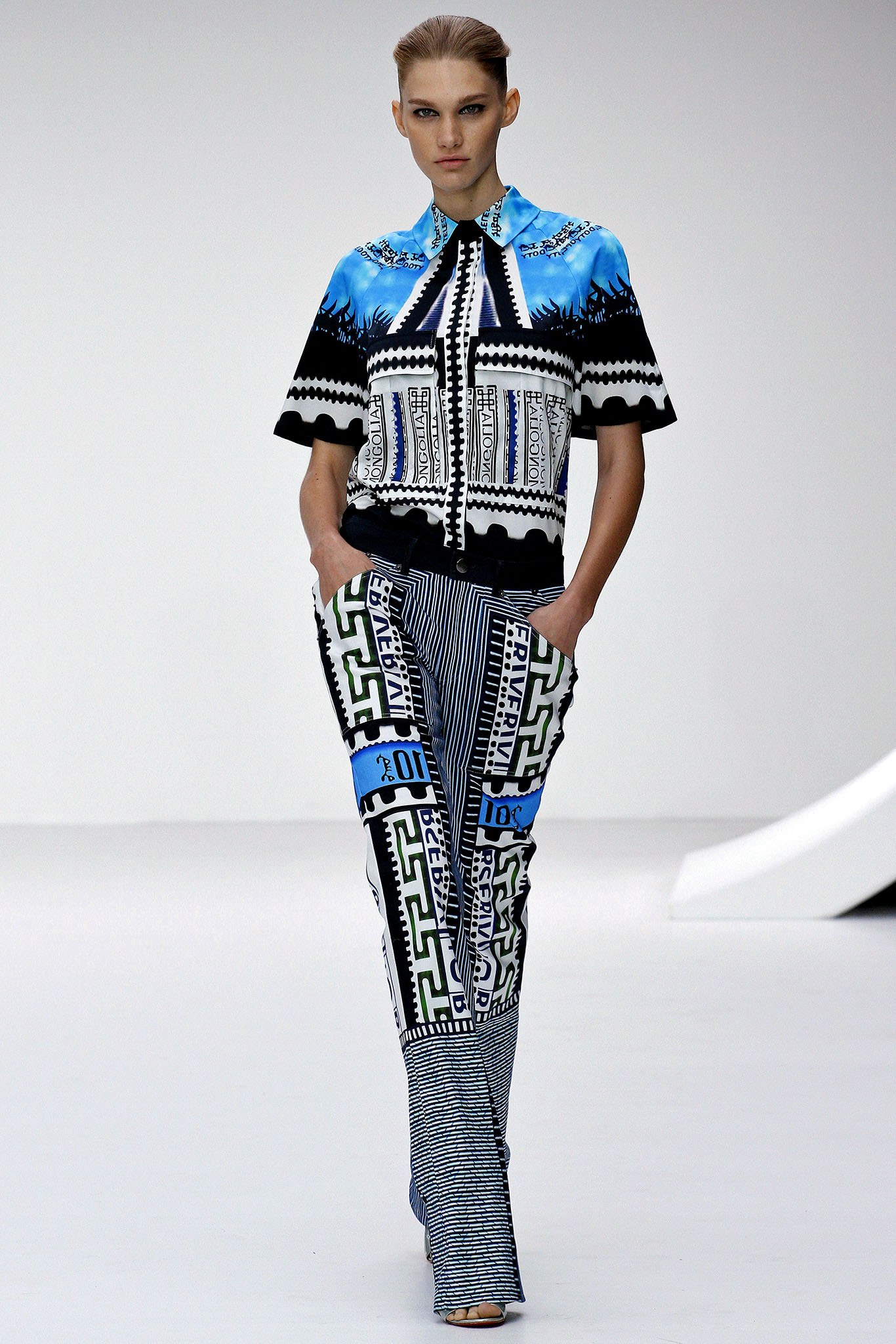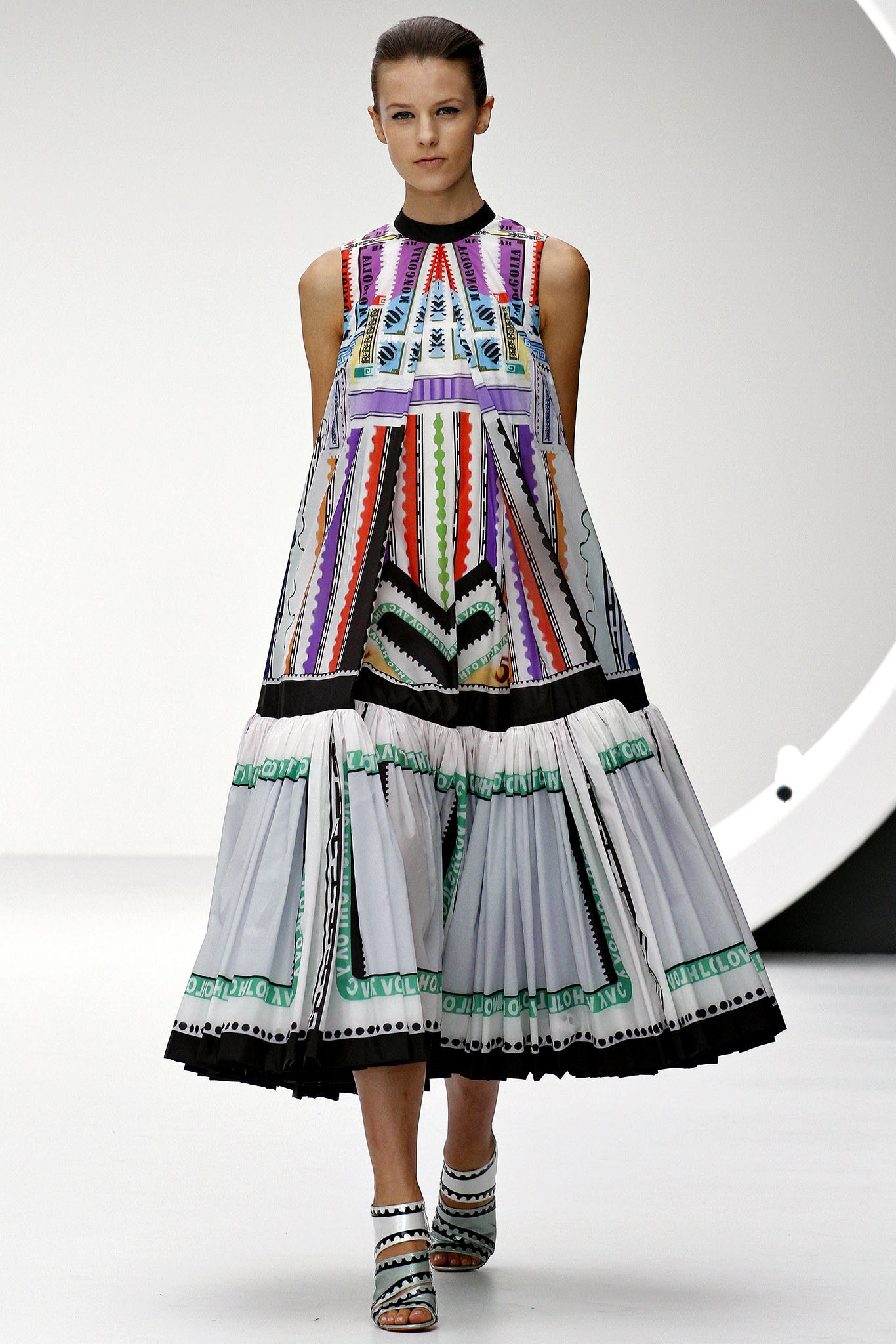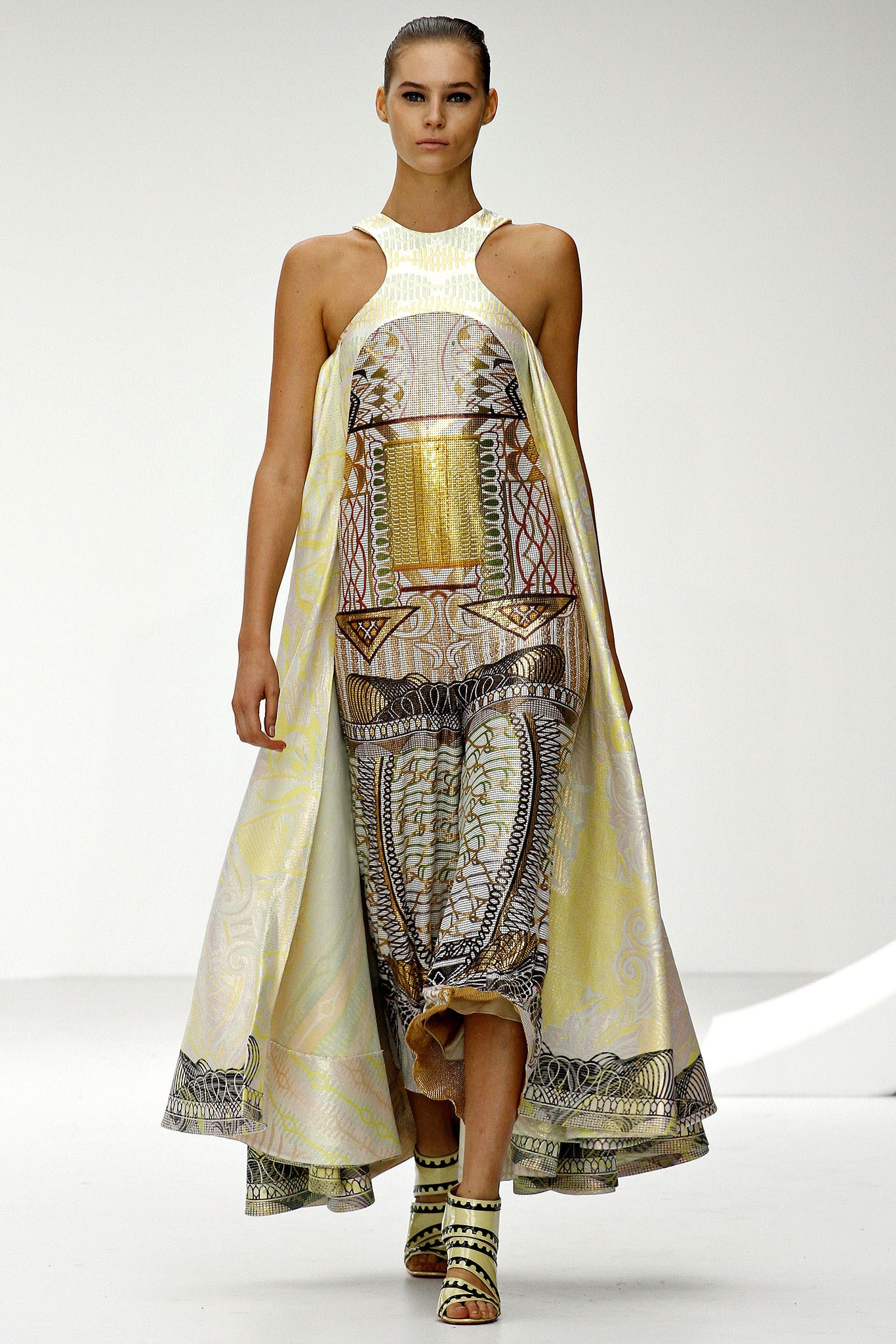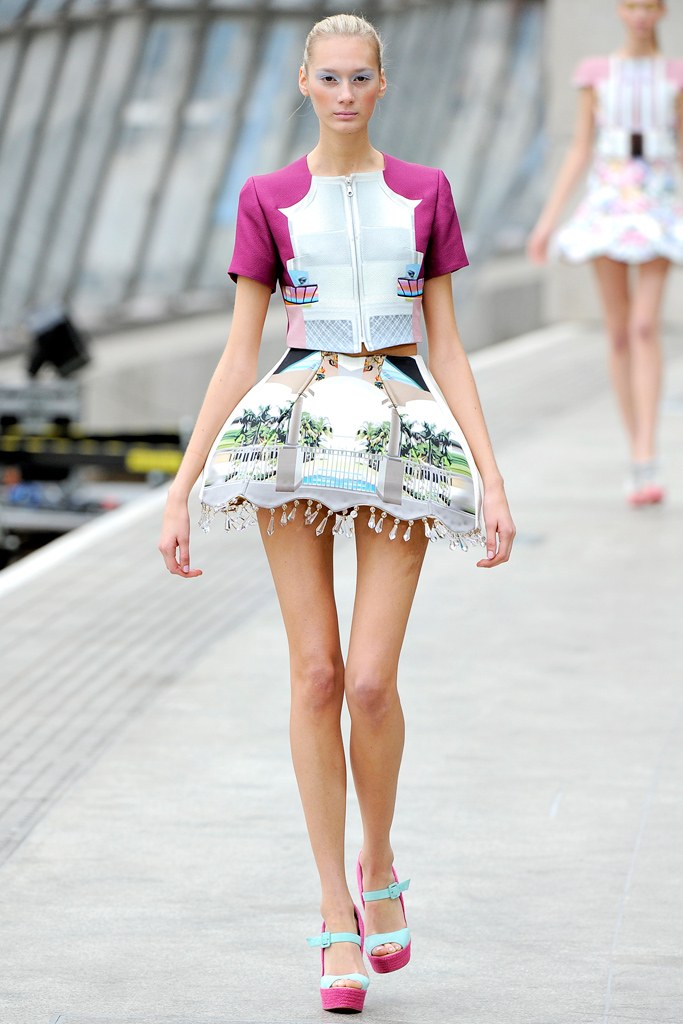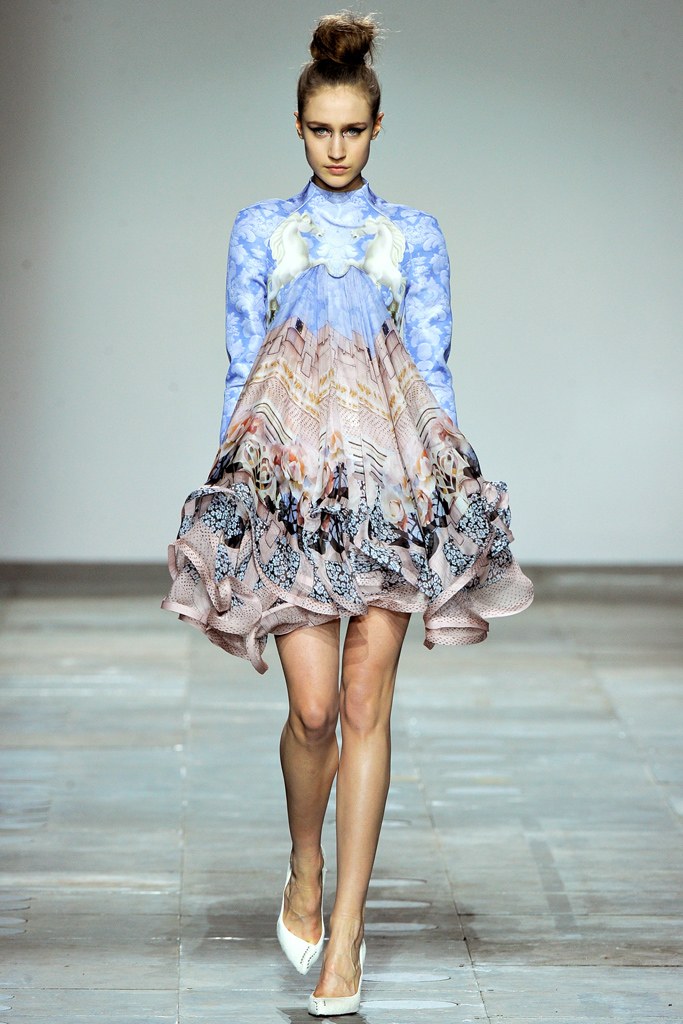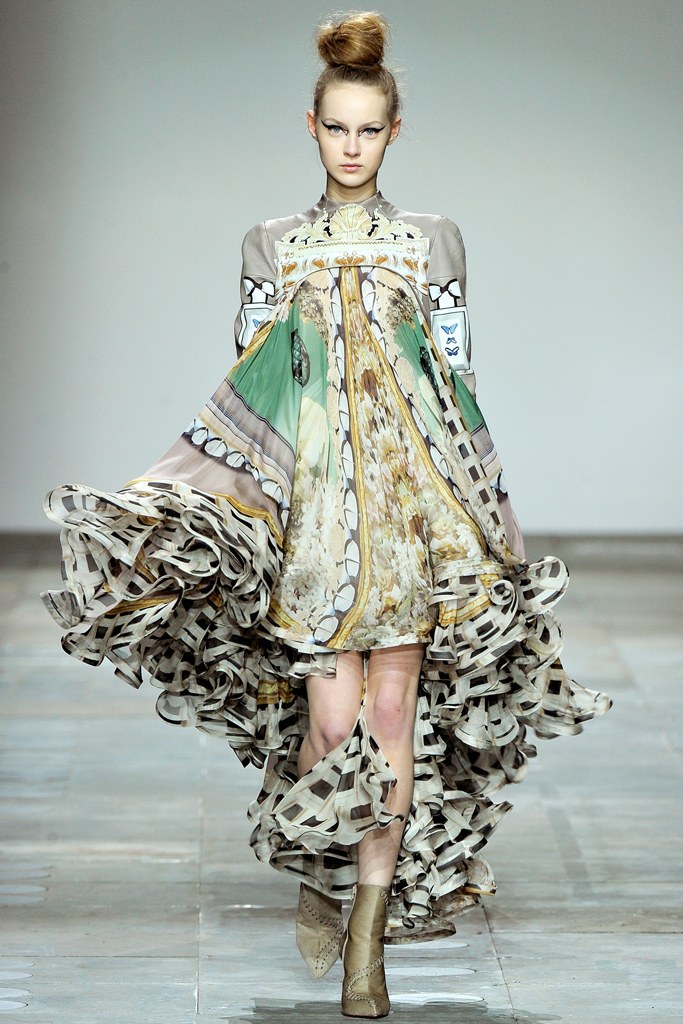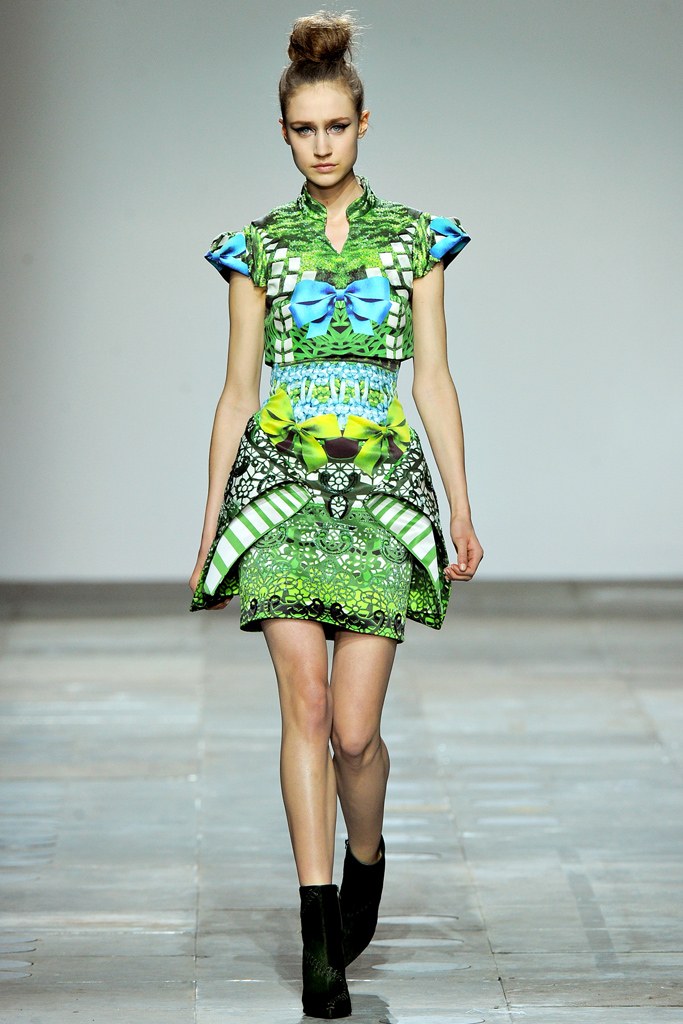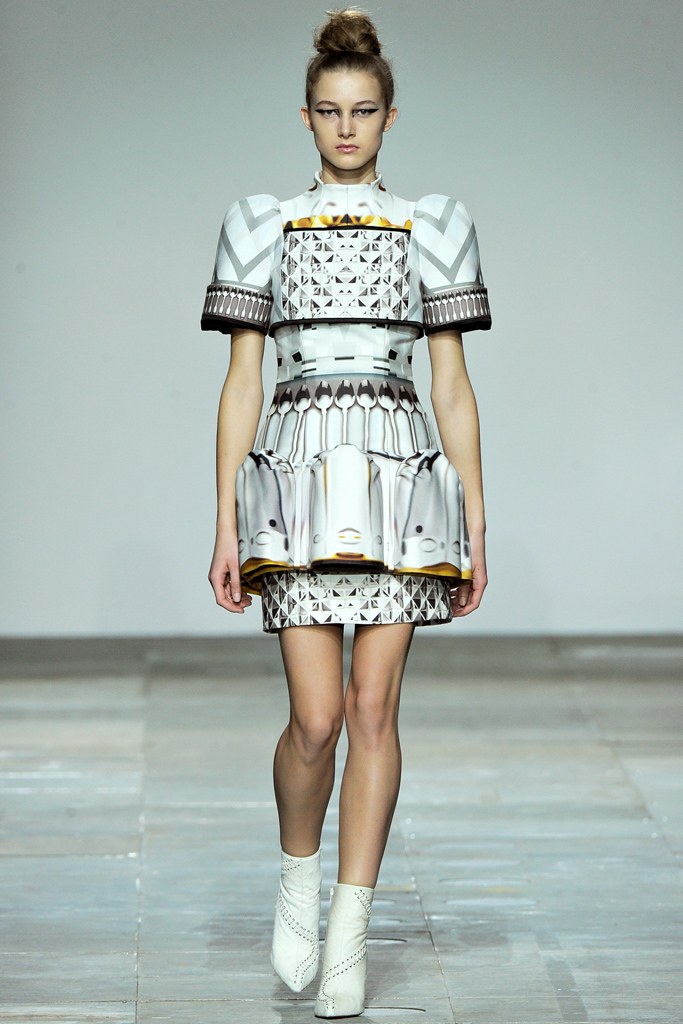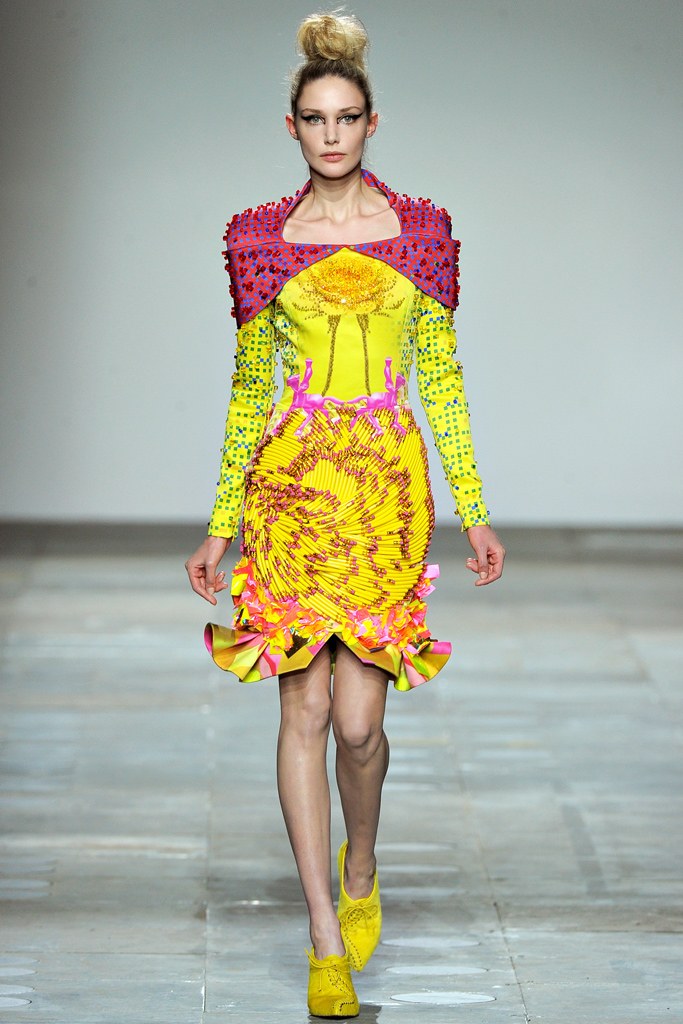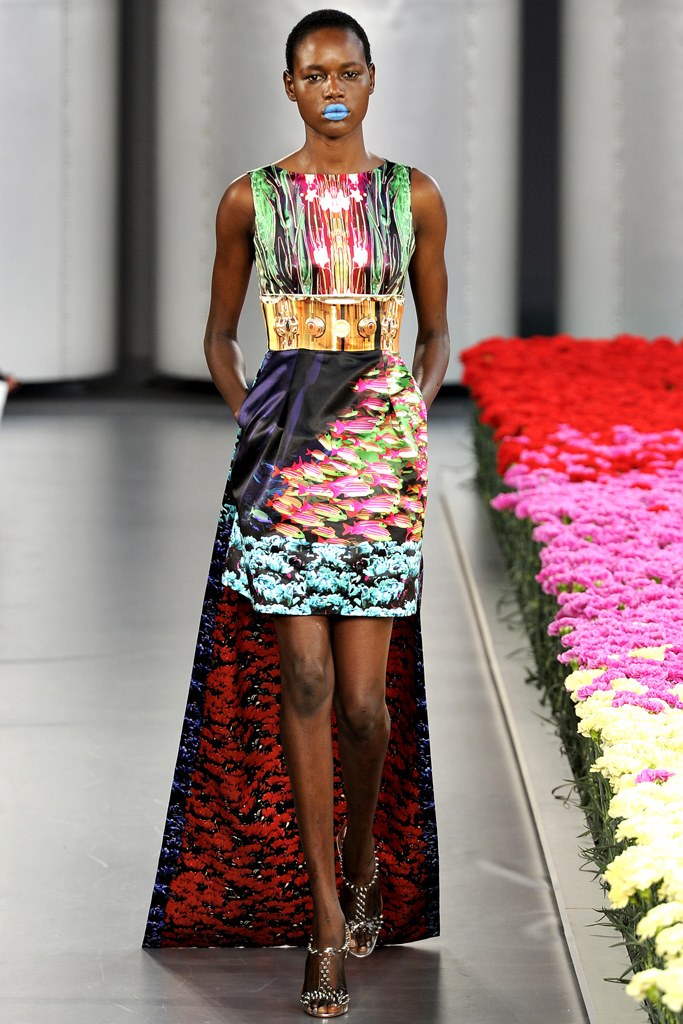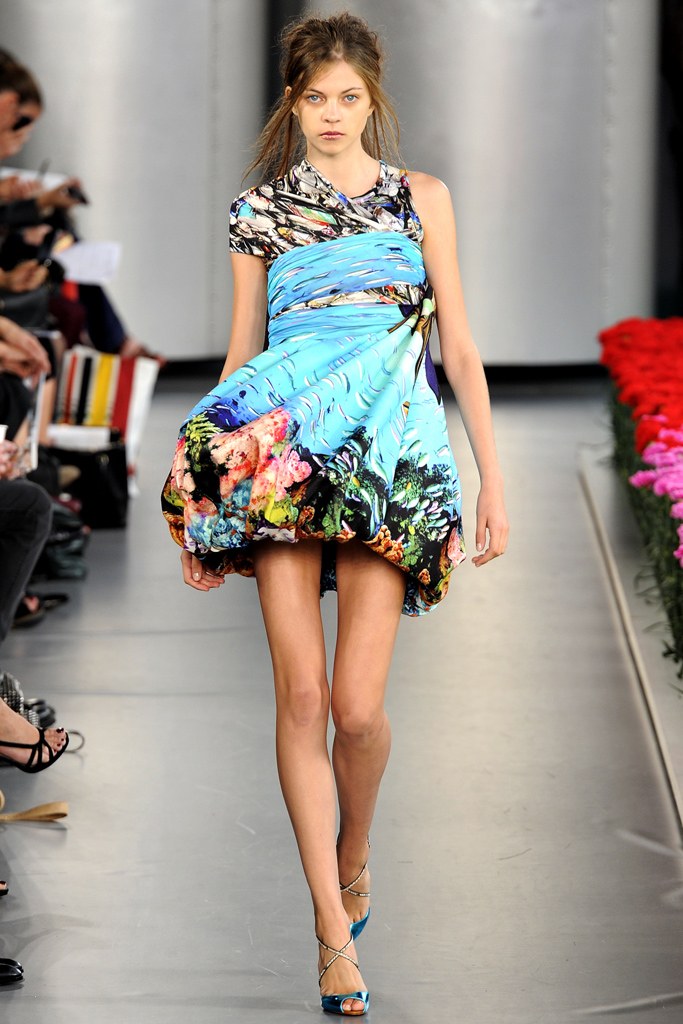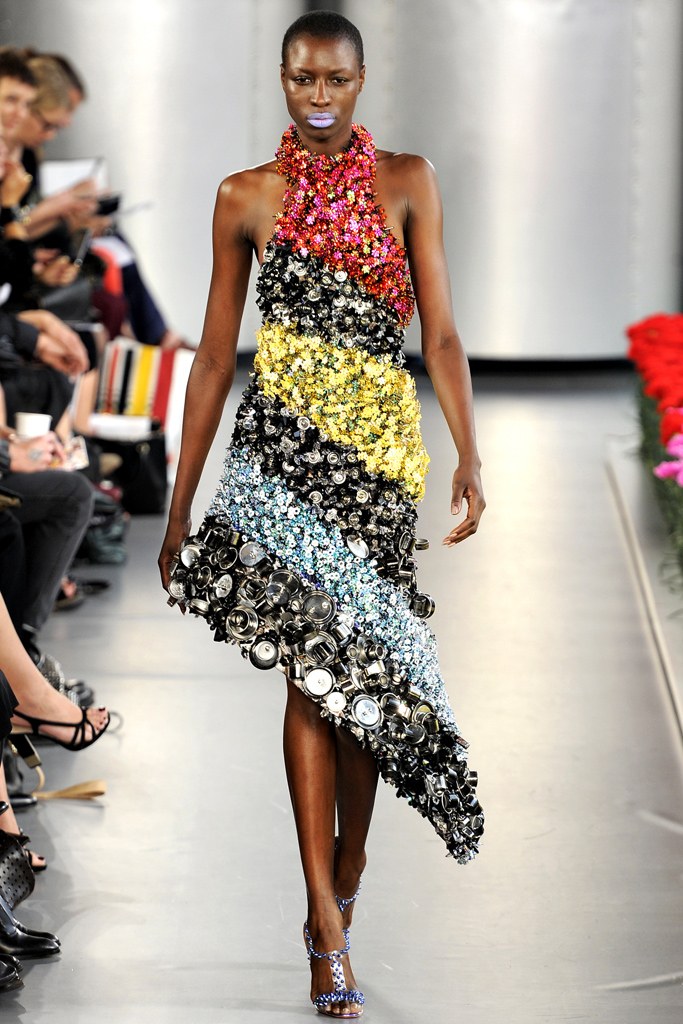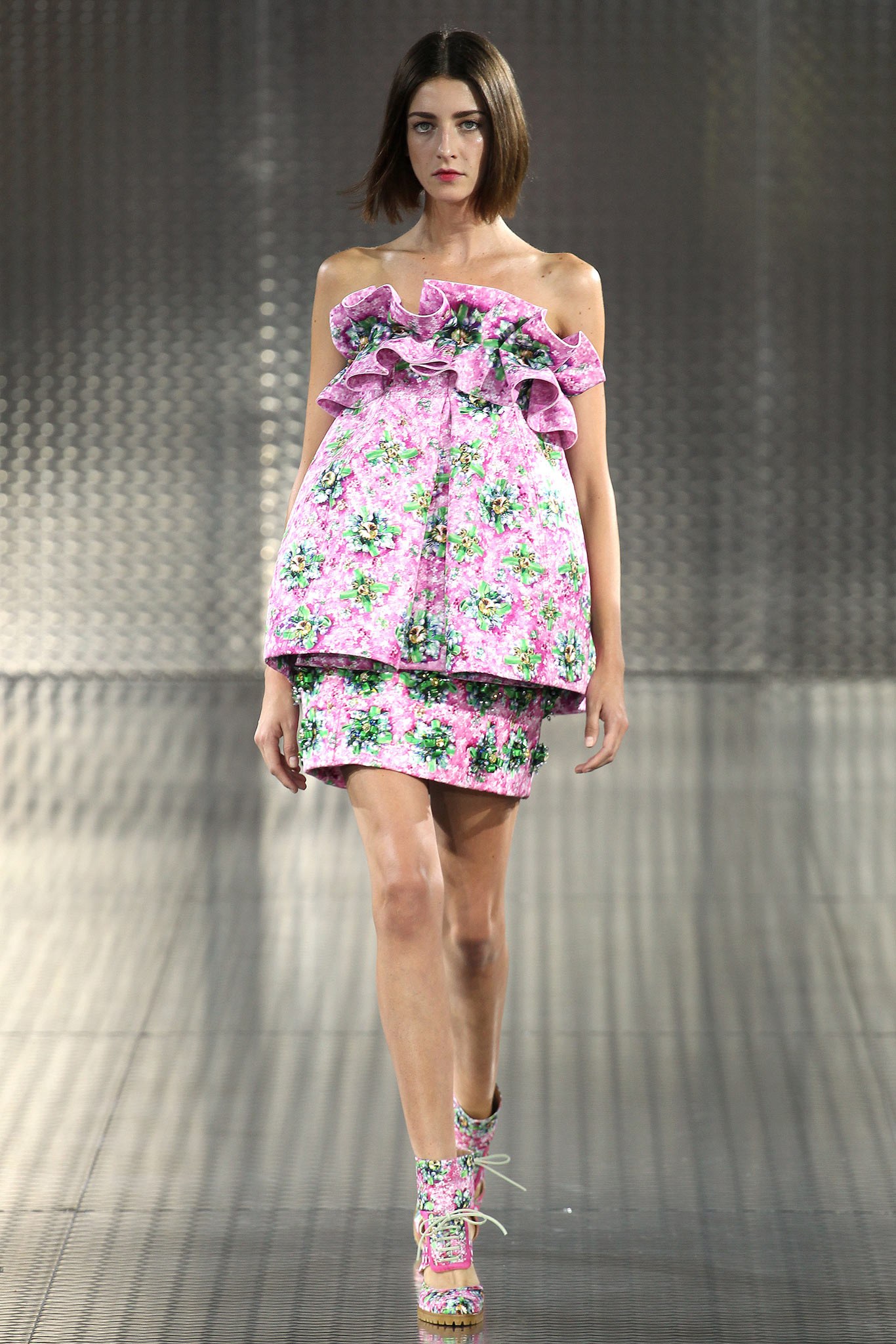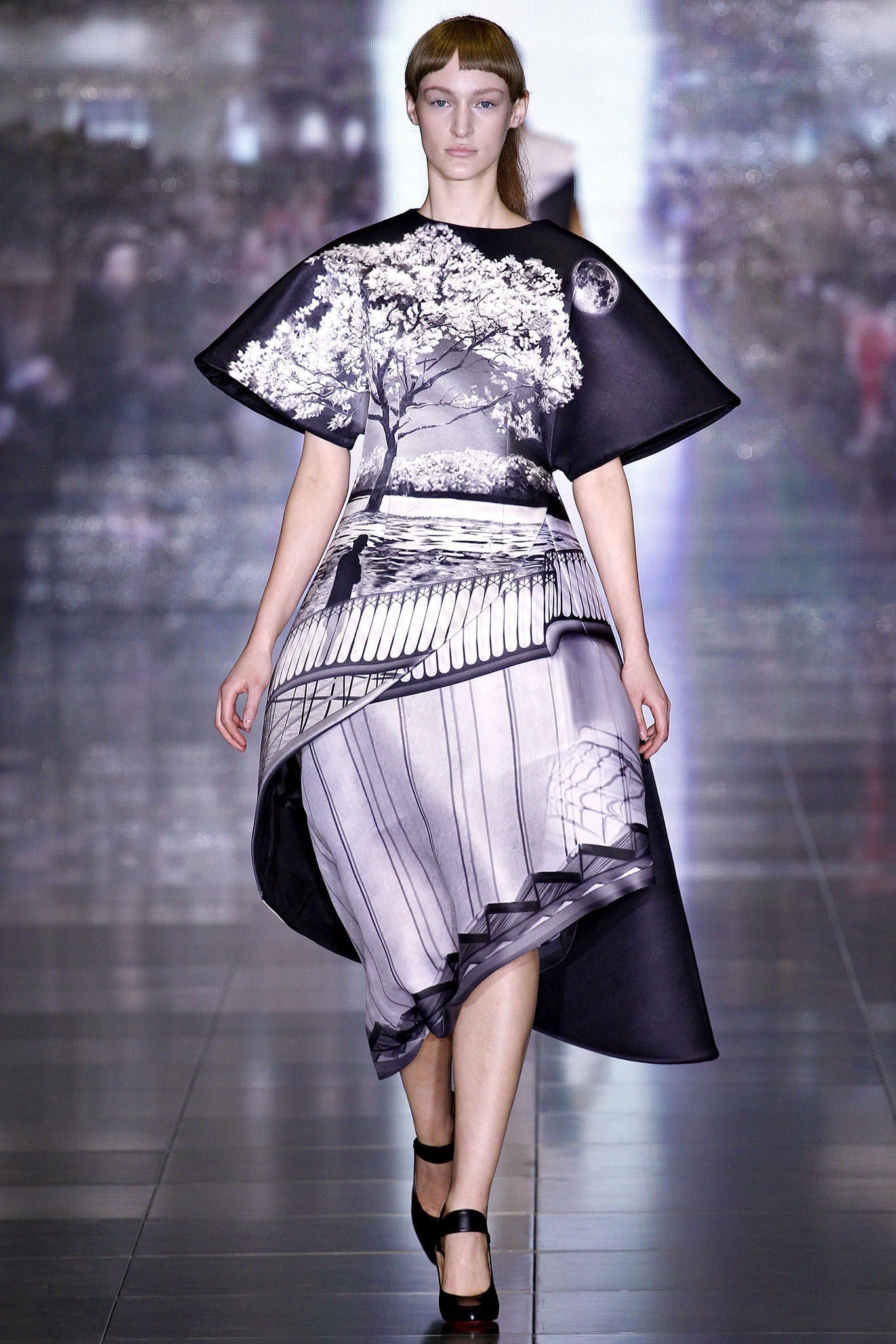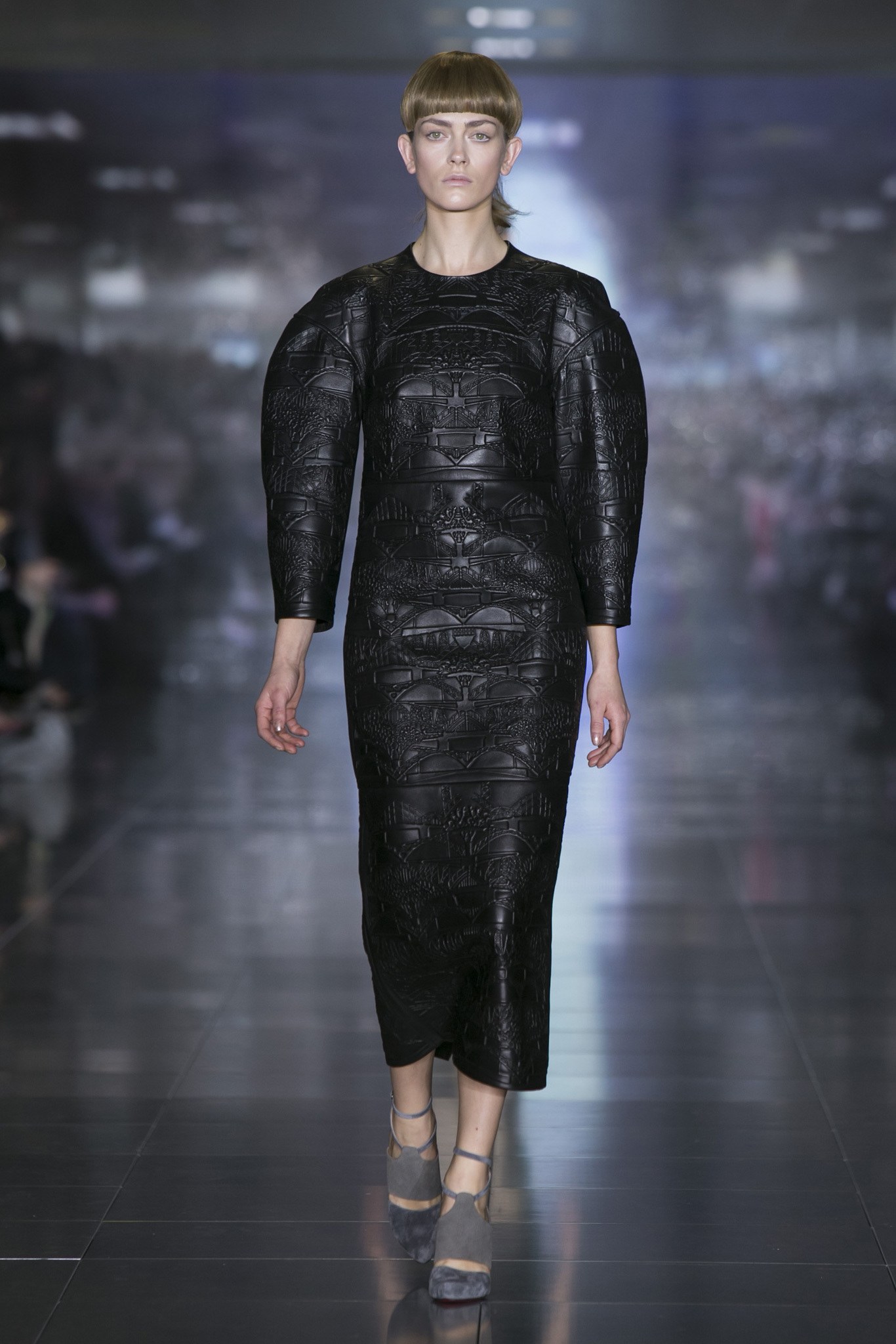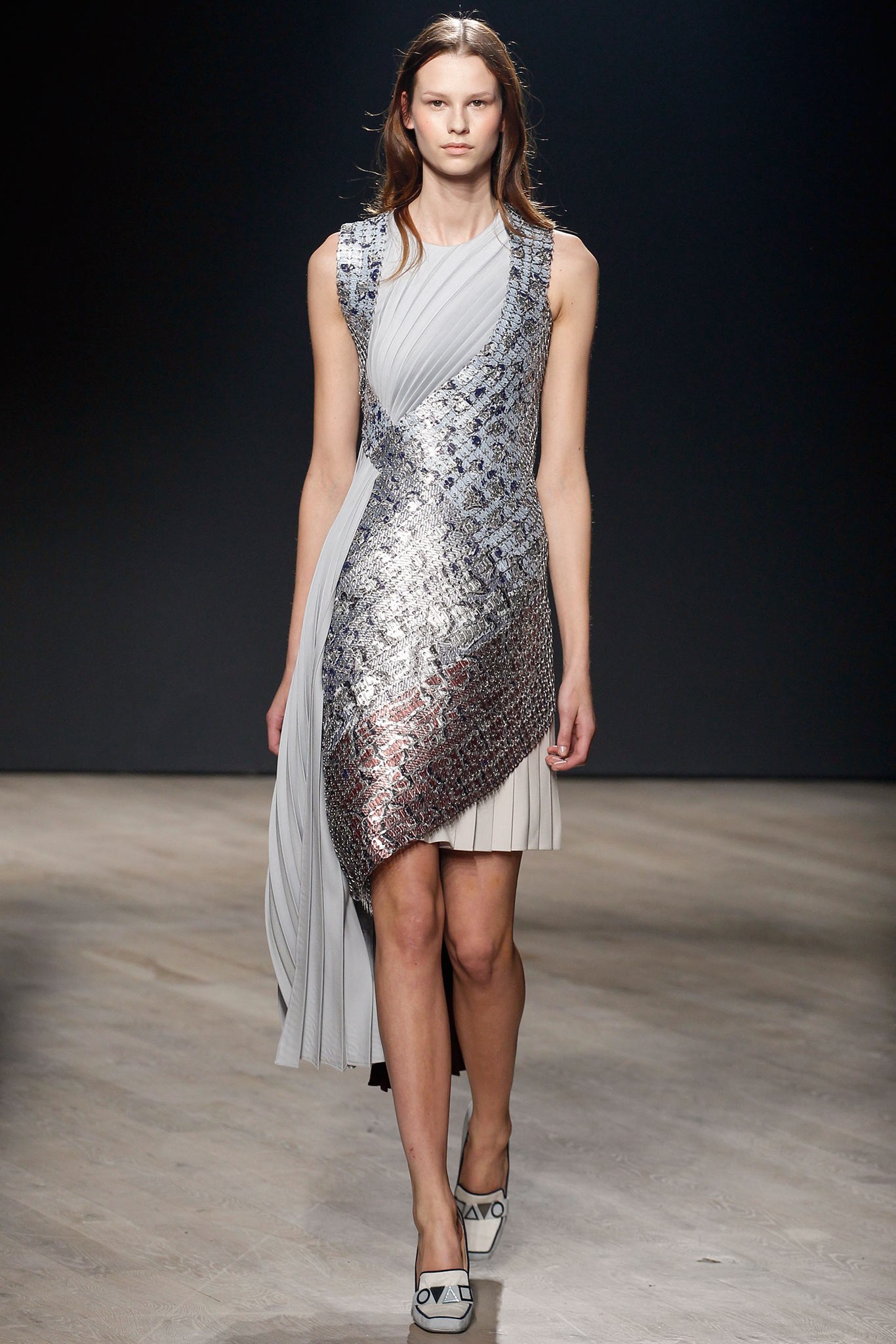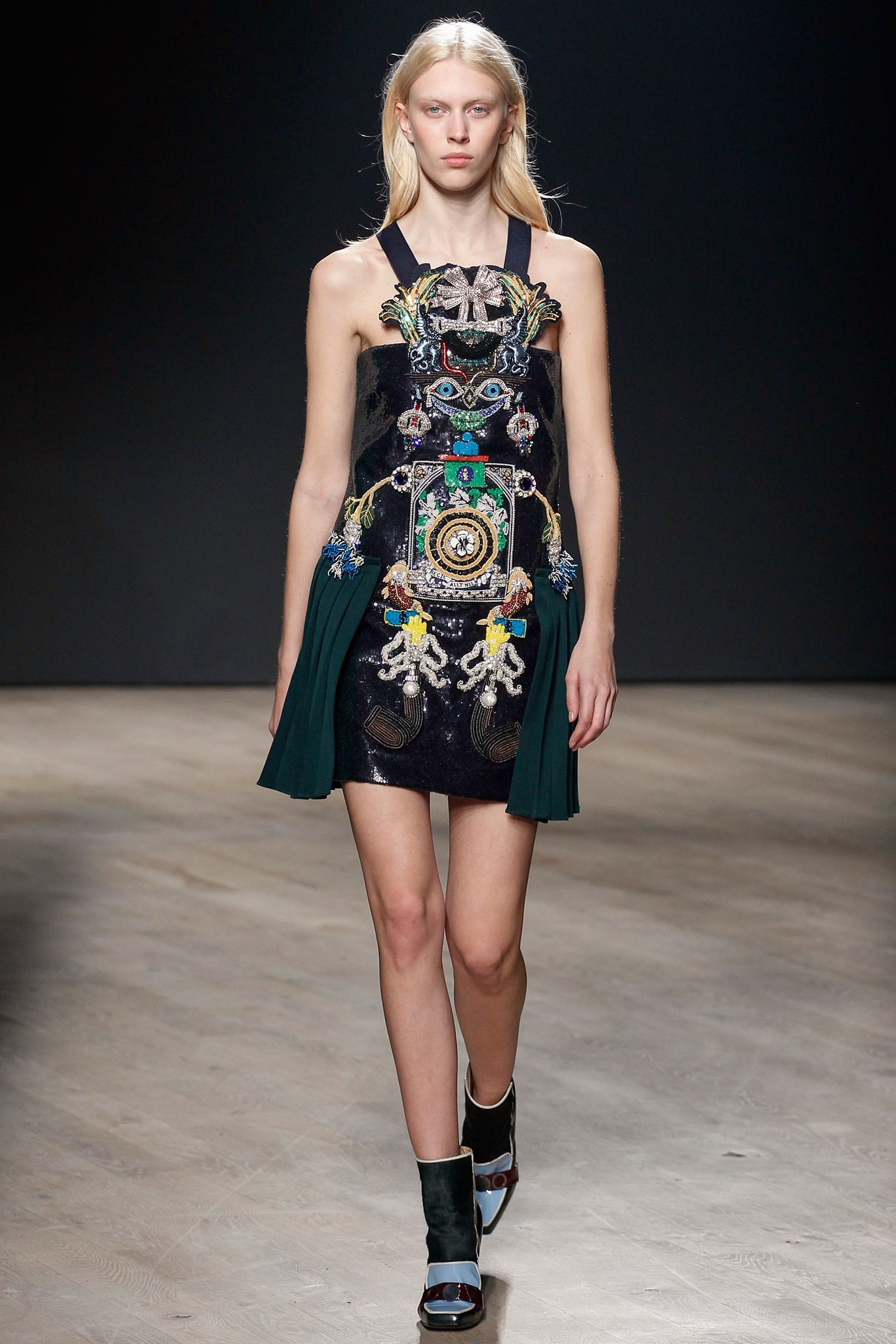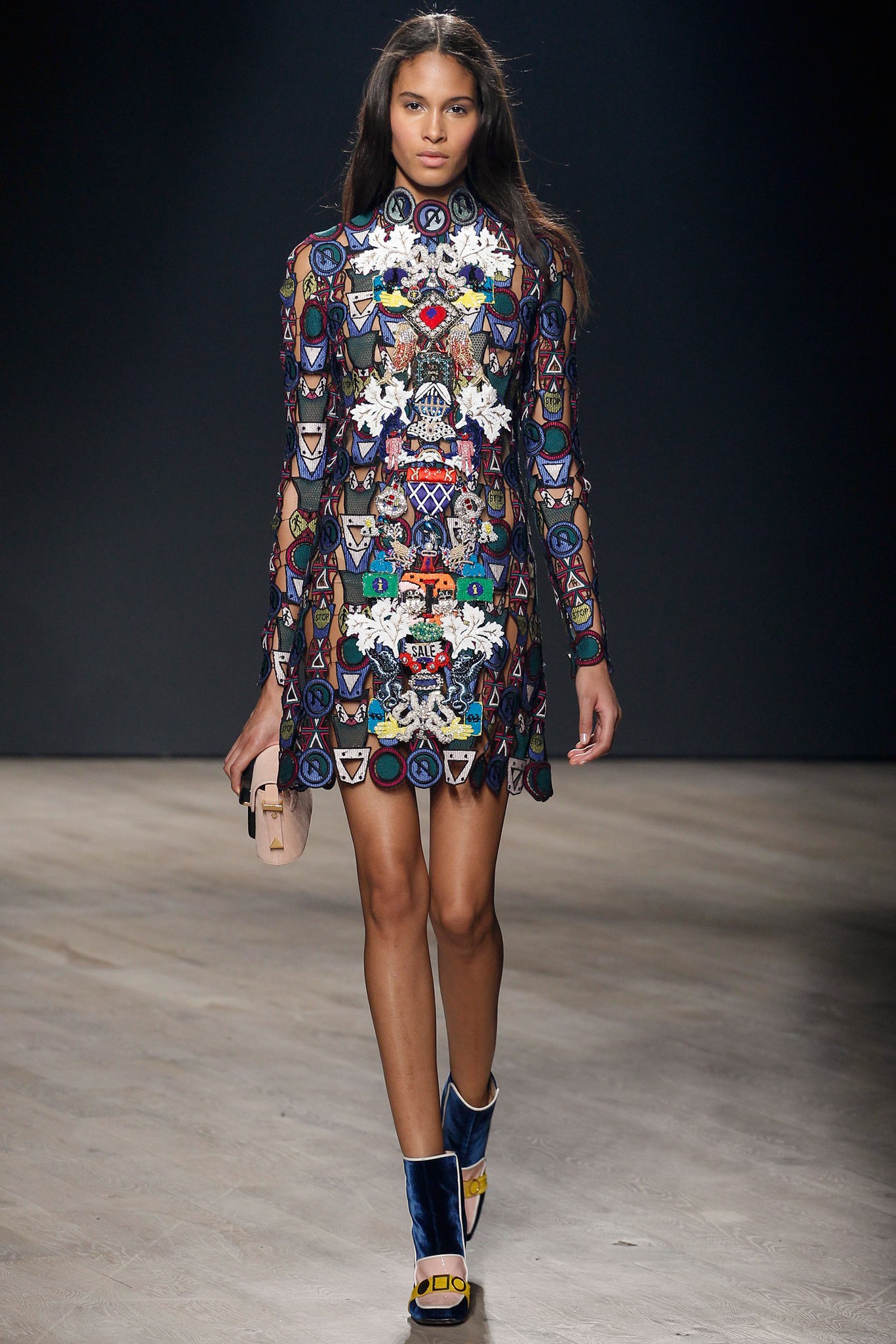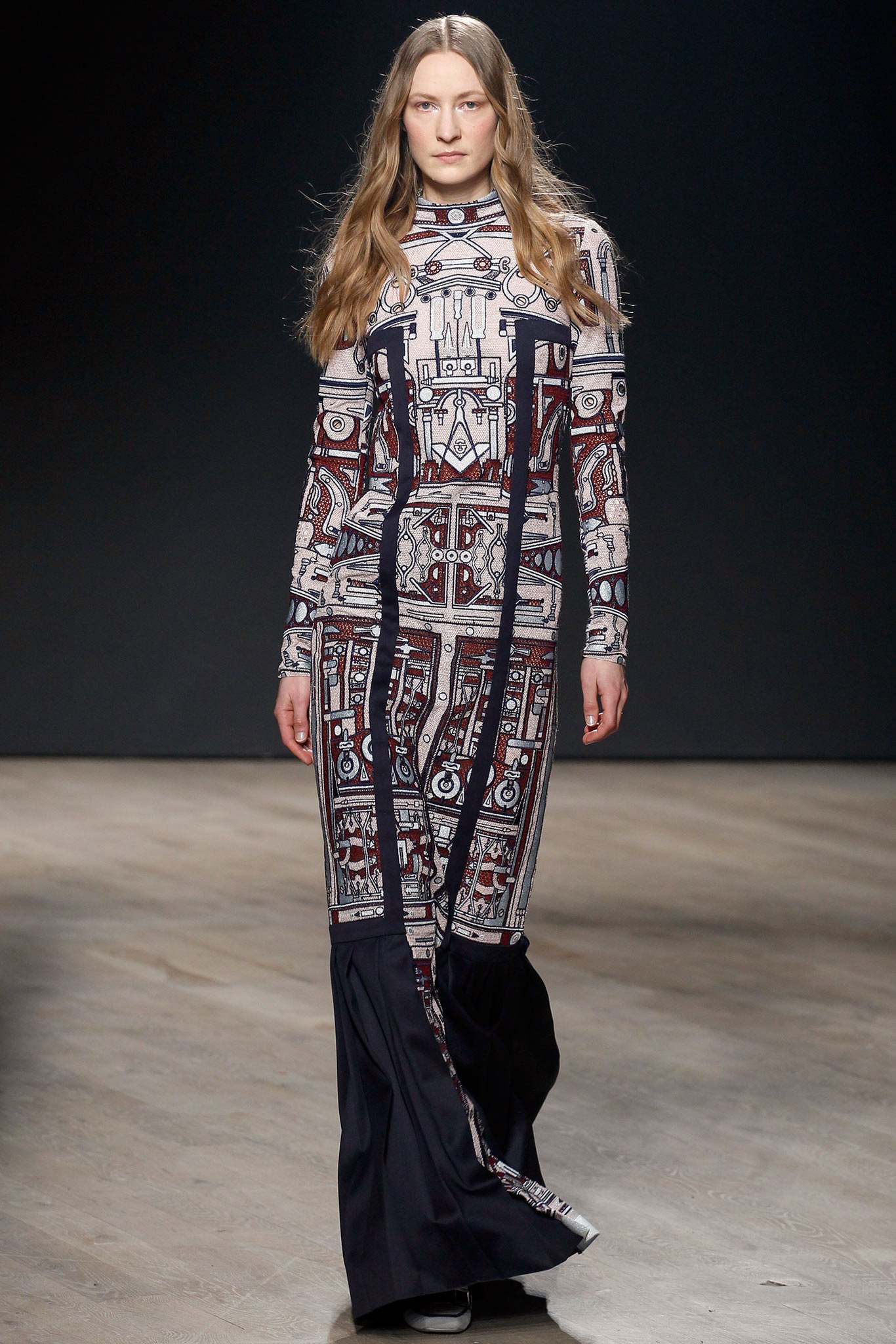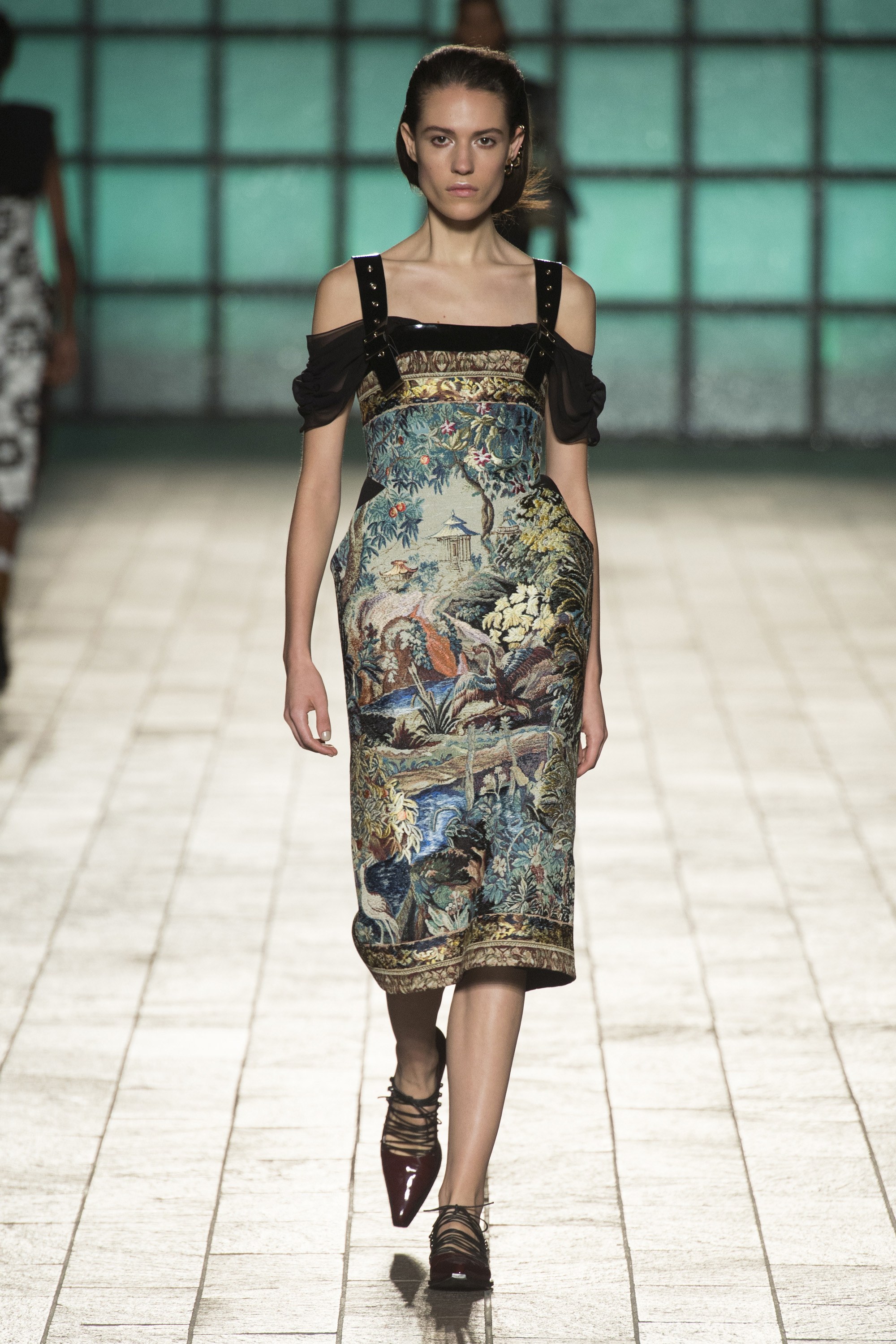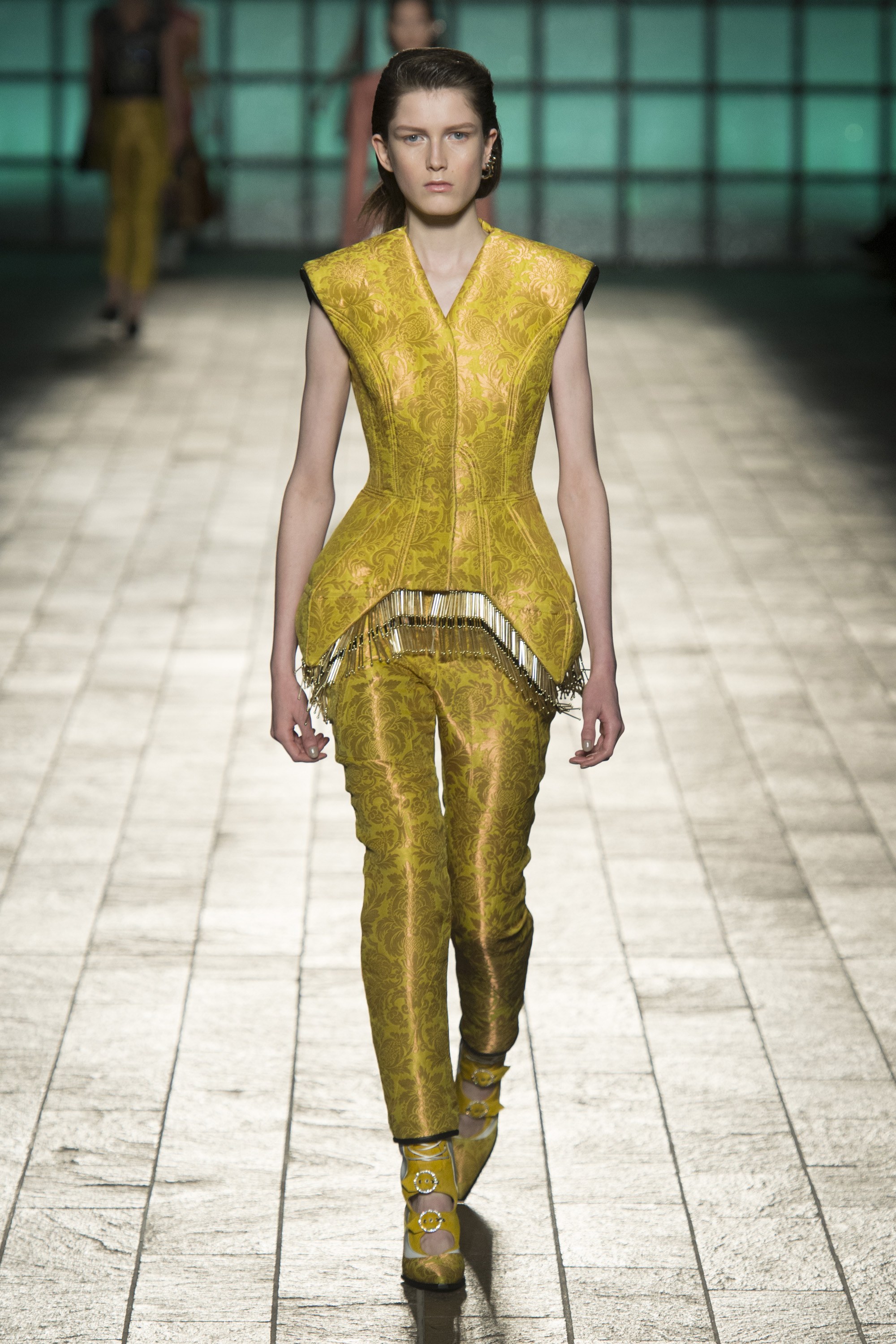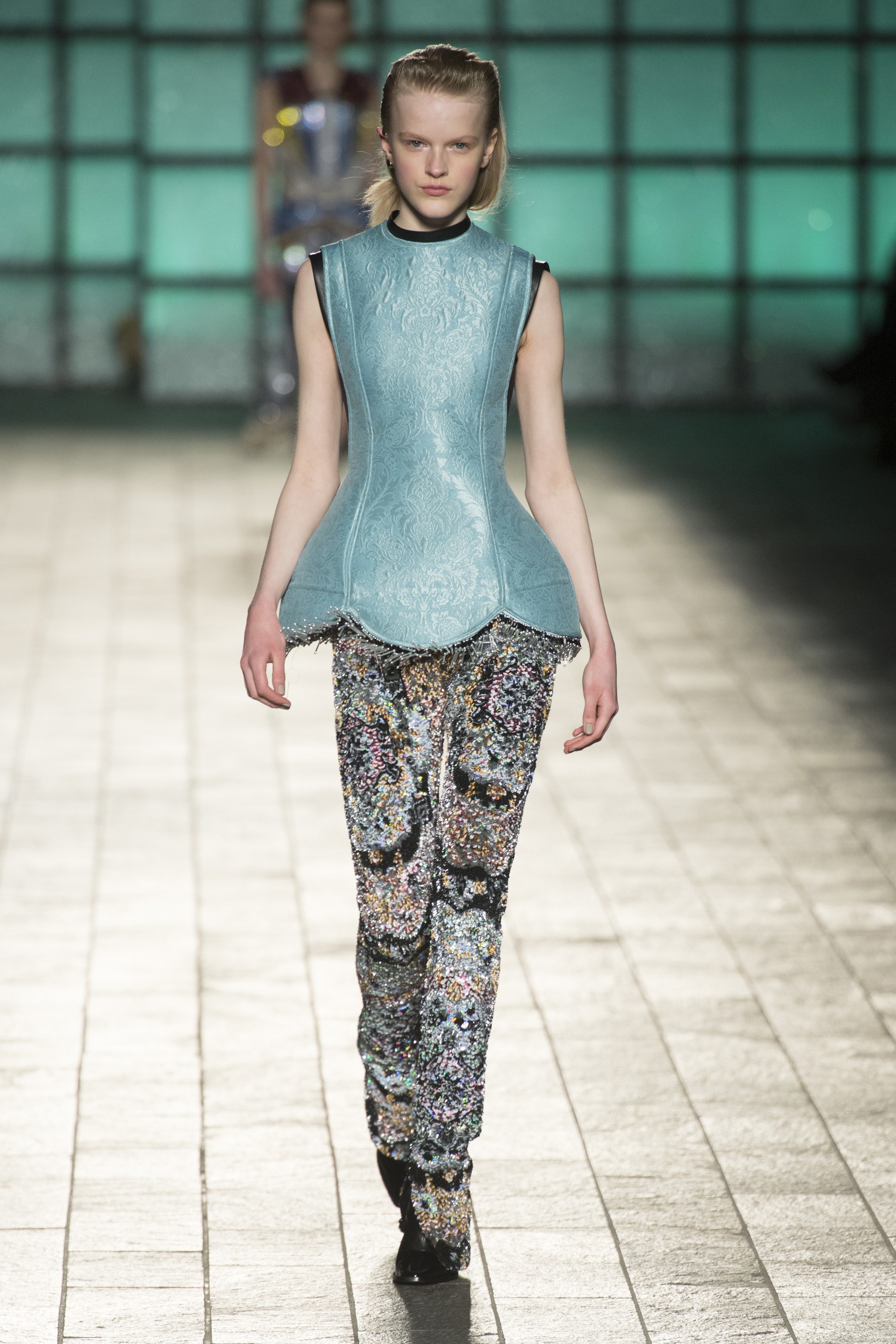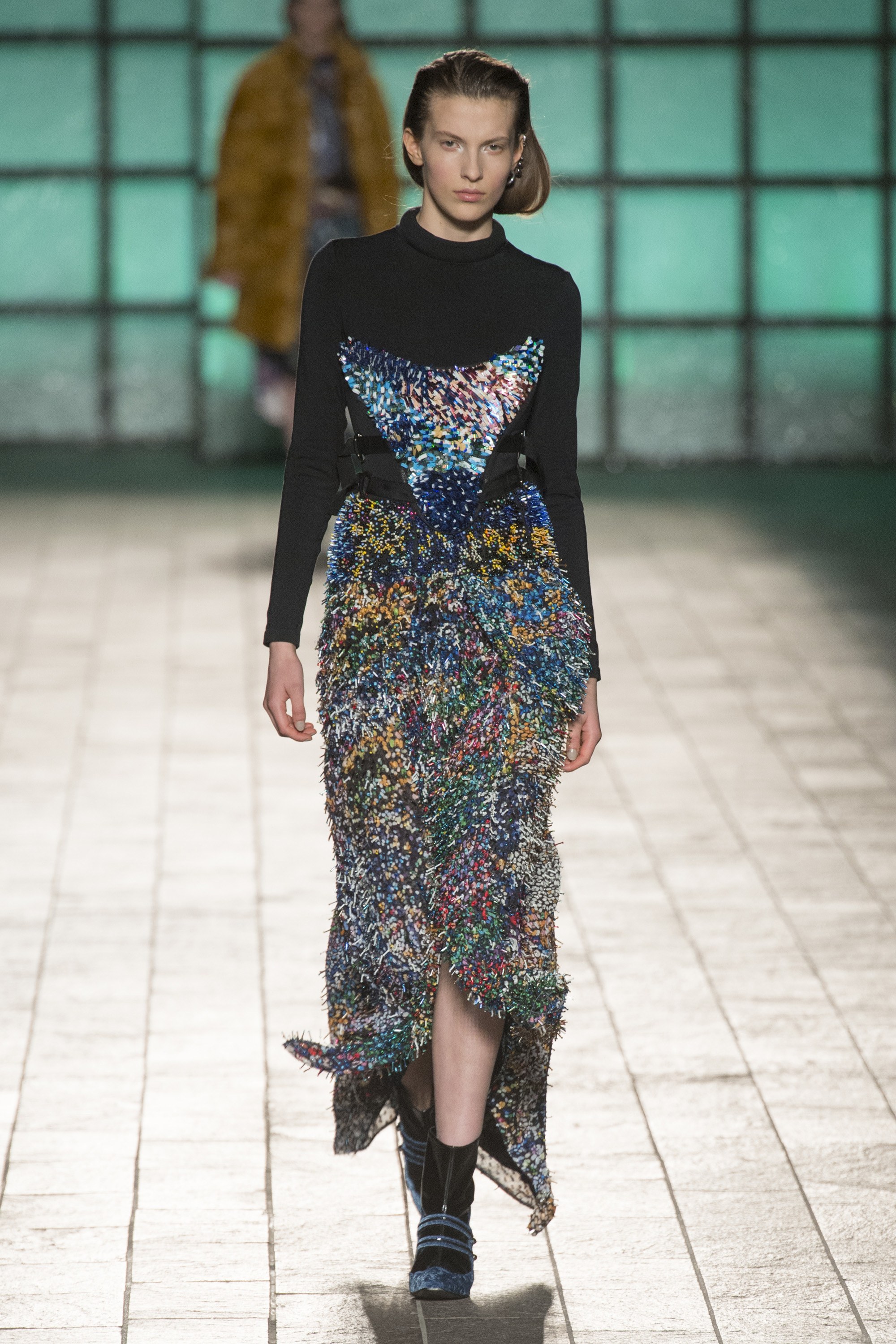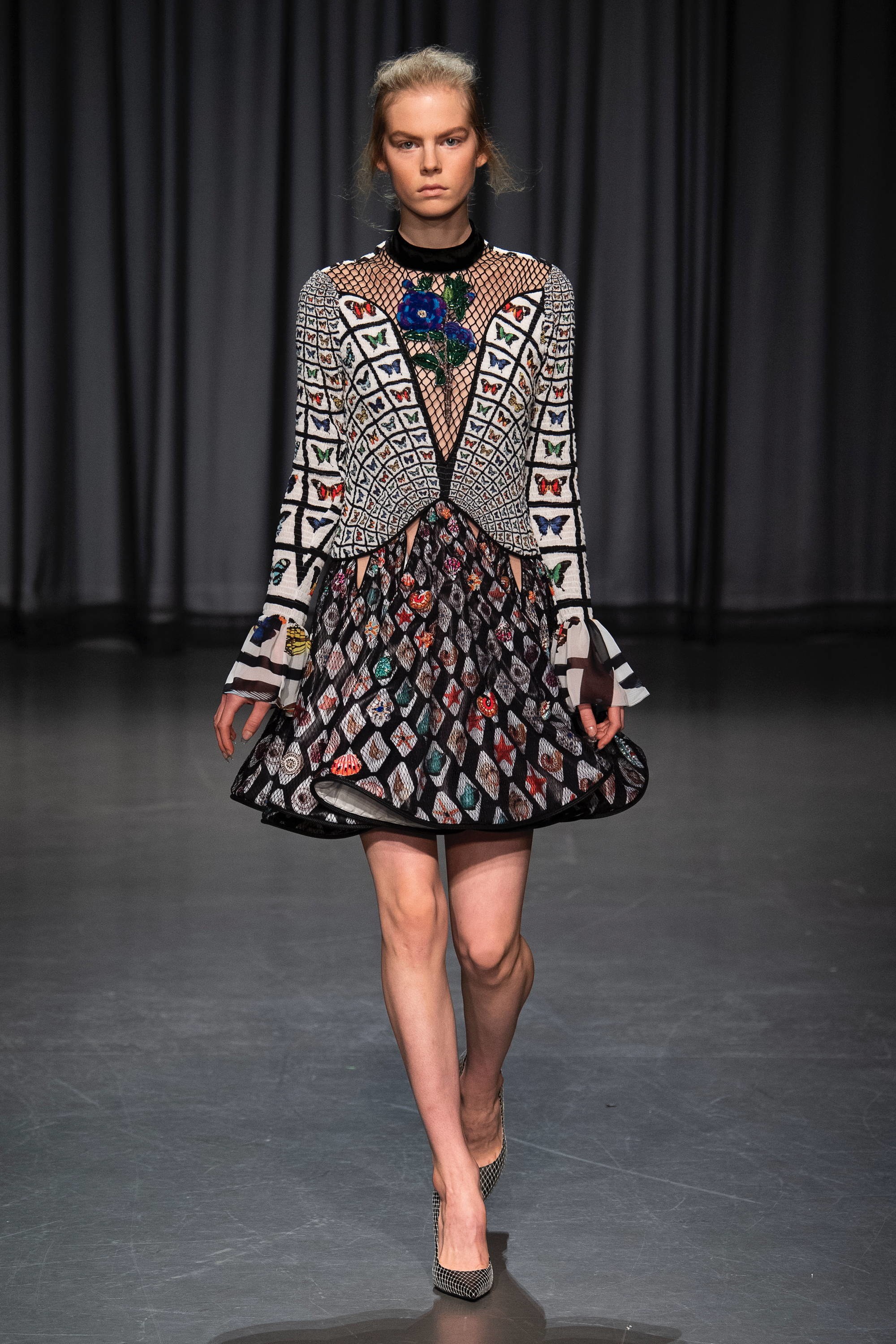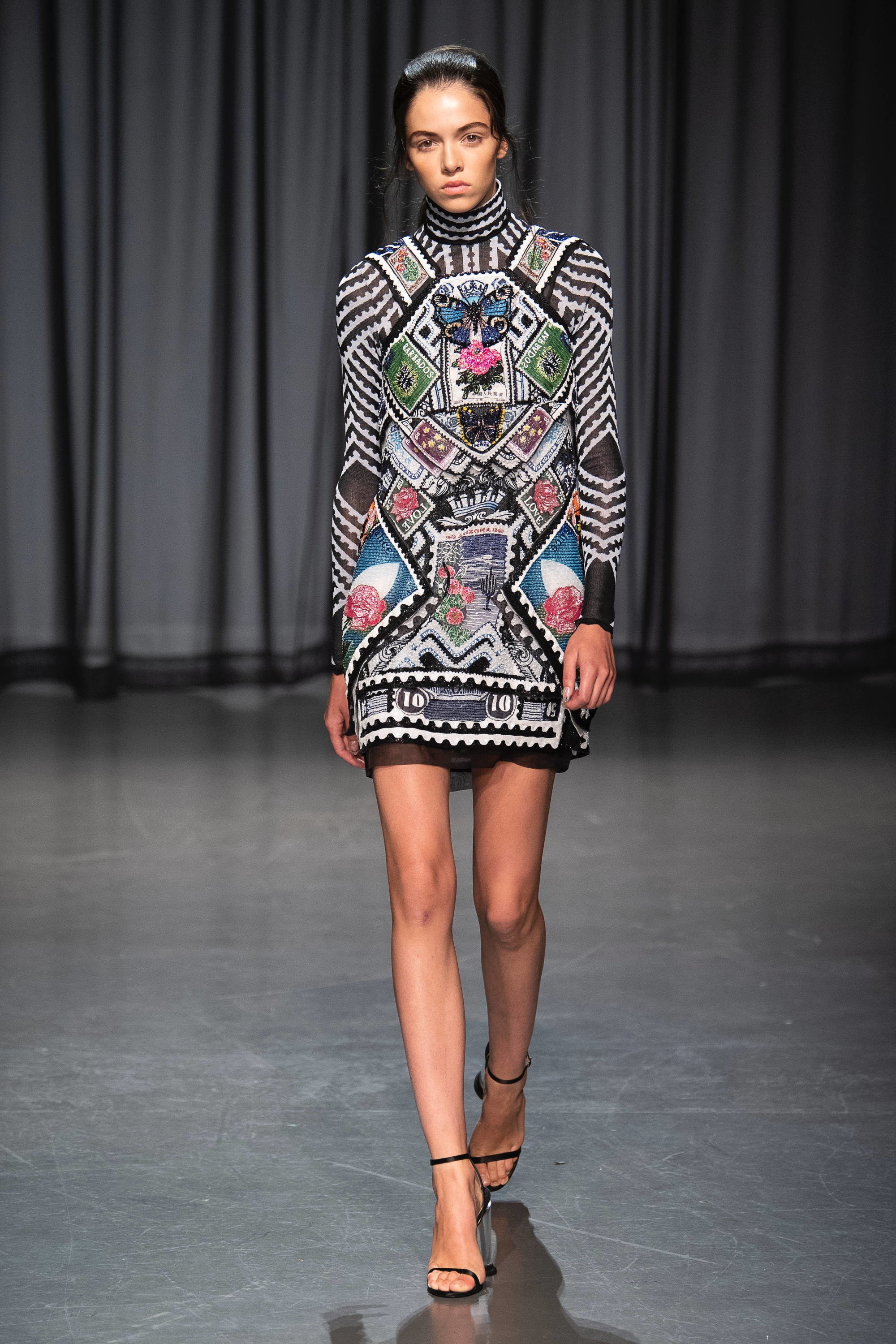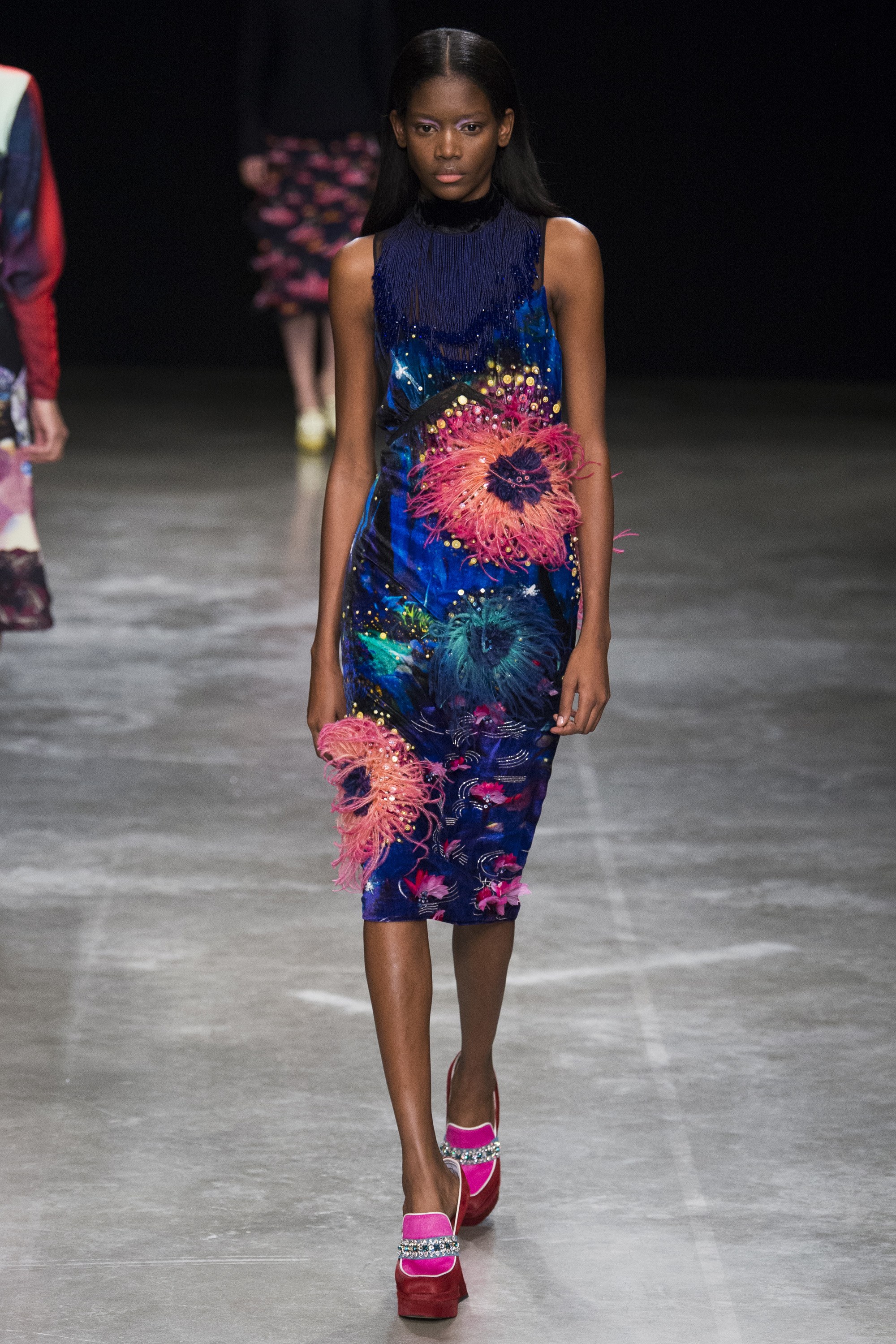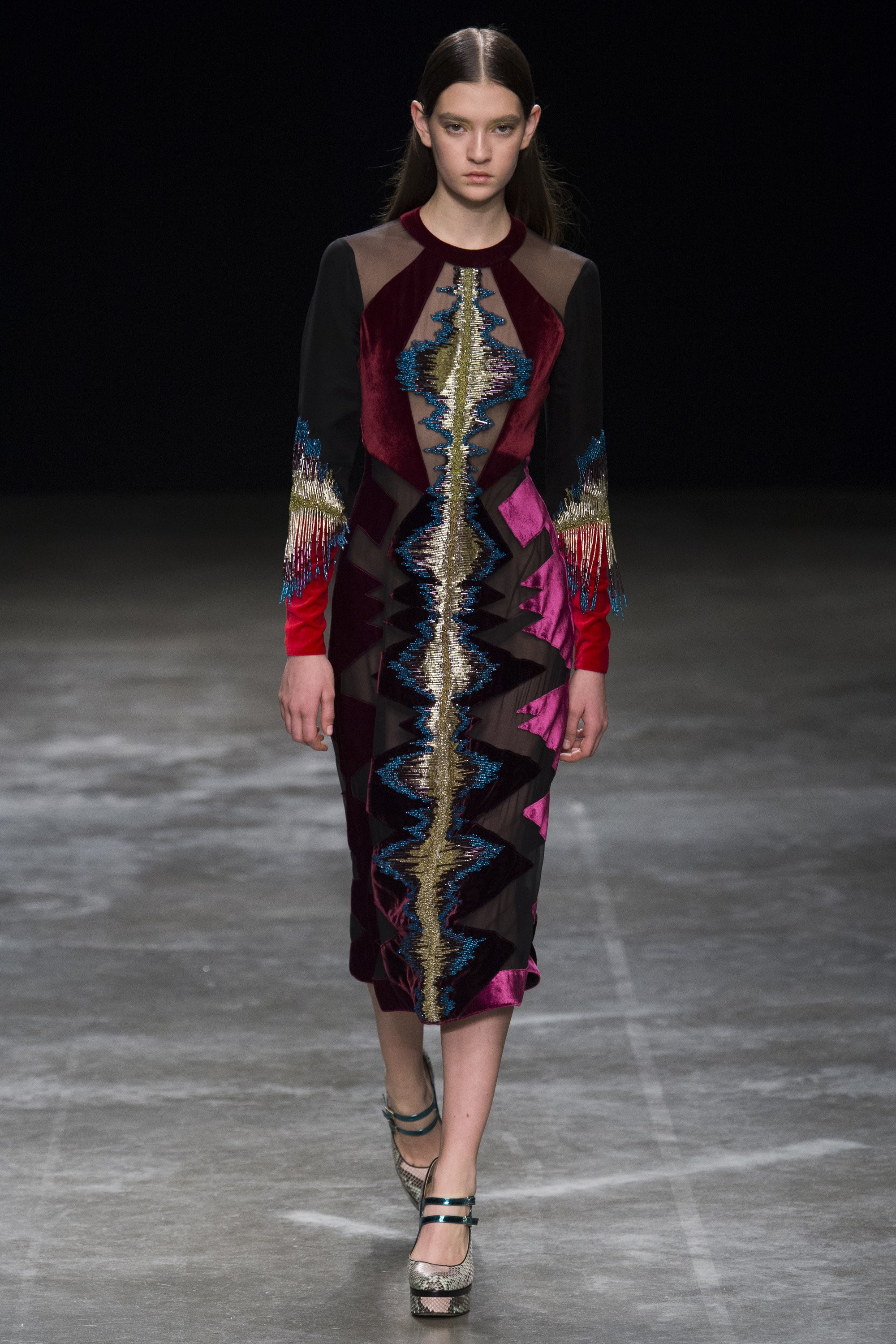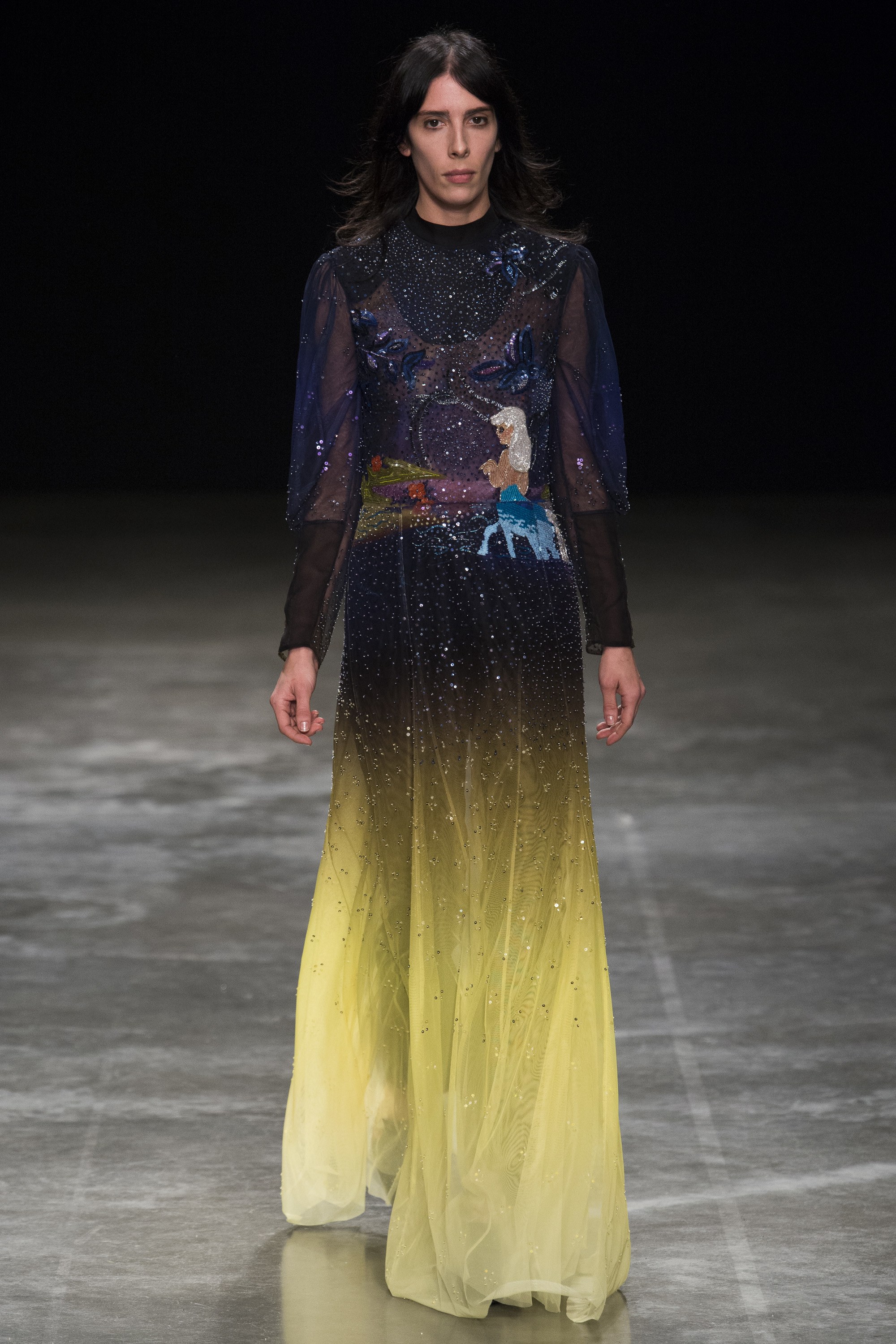LIGI & ESTERA - SEAMSTRESSES
This interview is with Ligi and Estera, very talented seamstresses who work together at Mary Katrantzou. Working with them was a dream and a privilege as they have a wealth of knowledge and experience in bringing Mary’s complex designs to life. Working with them was always a real collaborative effort between seamstress, pattern cutter and sample cutter. They always had a new idea to try or a quick trick, when other people would have long since given up.
What is a seamstress?
Ligi: A seamstress receives the pattern from the pattern cutter, and we have everything already cut by the sample cutter. Our job is to put it together. We are working on toiles and prototypes and after a style has been fitted and developed we make the final catwalk sample. For more simple styles we can finish in a few hours, but complicated styles can take many days.
Why did you want to be a seamstress?
Ligi: For me it just sort of happened. It's quite an interesting job, because you take the garment and it's like a puzzle to put it together. As a sample seamstress, we don’t make the same garment too many times, which helps our creativity. Machinists in factories usually do only one seam, for example the side seam, and they do that over and over on hundreds of the same garments each and every day. For us, we start and finish each piece, and it’s always a different garment. We work with the pattern cutter and designer to decide the best finishings inside and outside of the garment.
“It's quite an interesting job, because you take the garment and it's like a puzzle to put it together”
How and where did you learn your skill?
Estera: After I finished school I got some experience in a factory doing an internship. Then I went to uni to study fashion design and technology. So that's how I started to learn how to stitch, and how to make patterns. But the most experience I have learned is here in the studio I would say, because it's completely different to the work I've done before.
Ligi: In Lithuania, we are taught how to make our own patterns, and how to stitch it. After my studies I had a private company that I was running with a friend, and we made coats and outerwear. From then on, my experience has grown, but I chose to go down the making side, not the pattern cutting route.
How long have you been in the industry and where have you worked?
Estera: We have been here (at Mary Katrantzou) for 10 years now. It was our anniversary on January 11th! (2019) We also worked together for Holly Fulton, and did lots of work for students as well on their final collections.
The fashion industry is notoriously hard to get into. How did you get your foot in the door in your first job?
Ligi: You just show them your skills! That's the best way. If you are good then everyone will want your experience.
What is the best thing you were taught when you were starting out?
Ligi: It was from a seamstress called Tatiana. She taught us to stitch through the underlay paper, for chiffon and thin fabrics, which was the best advice. This line of stay stitching holds the fabric to the pattern measurement. Then you can carefully tear the paper away. You can also use fusible tape to hold thicker (less see through) fabrics to a specific measurement.
“You need to press as you go along. When you have sewn a seam, you need to press it straight away, because afterwards it might be difficult to get to that seam.”
What is your top tip for home sewers to improve their sewing?
Estera: You need to press as you go along. When you have sewn a seam, you need to press it straight away, because afterwards it might be difficult to get to that seam. That's why its important to have your work room laid out in an easy way so that you can easily switch from sewing to pressing. Sewing a garment should be done step by step.
Ligi: Special feet on a sewing machine help a lot because if you're not experienced it's hard to do top stitching nice and straight. A special foot is always a helping hand. They guide you so that you always keep the right measurement. Also, you have to trust your hands, there's no other way! It is also helpful to tape the seams where the fabric is likely to stretch, like the neckline because the curve is on the bias.
Estera: When we're stitching leather we use different kinds of needles, and you need to use a teflon foot. For metal zips you use half foot, for invisible zip you use the invisible zip foot. We have top stitching feet from one millimetre to one centimetre, or more even. So we have at least 10 different topstitching feet! We have a foot for faux fur, the front is more curled up, so when we are stitching it doesn't catch the fur. We have a special binding foot, where we thread the flat bias binding through and it binds the edge of the fabric. We have a special tool to make folded binding with. We have button hole feet, feet with extended sides, everything!
Ligi: Over the years we have built up our collection of feet. You build up as you work out what is most important for you and then you know if you need it or not. Some people don't use a lot of different ones, they just use normal foot, zipper foot and topstitching foot.
What is your favourite tool to use at work?
Both: Snippers!
Ligi: Without snippers you cannot get far!
Estera: They are really fast to unpick seams, or to snip or cut or trim threads away. Snippers are quicker than scissors because you don't have to put your fingers in the handle like scissors. I keep them right next to where I'm sewing on the machine so they are close to hand. Paper strips in underlay paper are also really useful. If you need to ease some fabric to a certain measurement, or hold pleats in place before sewing them to another panel. You can mark the measurement on the paper and then sew the fabric on to the paper as it wont stretch. Then you can rip the paper off carefully and the row of stitches should hold at the correct measurement.
“Snippers are quicker than scissors because you don't have to put your fingers in the handle.”
What is your favourite garment to sew?
Ligi: No you should just ask us what we hate...
Both: WE BOTH HATE VELVET!
Estera: I really like to sew shirts. When I started sewing I started from shirts and I still like to make them. Especially from cotton! I like the construction.
Ligi: We both really like a challenge, and to work on more creative garments. That's what gives us satisfaction.
What is the most exciting project you’ve ever worked on?
Ligi: We can still remember working on some of the outfits for the first show at Mary's. They really stay in your memory. At the time we were thinking 'oh my god they were so difficult' and now we think 'oh my god they were so easy!' As the collections have gotten more ambitious over time. We have worked on lots of fully beaded garments that were very nice.
Estera: With every show, at the end, we always have one piece that is our favourite. It could even be a garment that we haven't worked on, but we just really like it.
A selection of the amazing garments Ligi and Estera have made whilst working at Mary Katrantzou. All images from Vogue.com
What is the best part of your job?
Ligi: We are happy when we've made something and it looks beautiful and the designer is happy with it.
What advice would you give someone that would be hoping to follow in your footsteps?
Ligi: You can't take it personally when they take the garment for a fitting that you’ve just finished and they cut into it, and you've been making it for two or three days. It is part of the job, but not everyone can accept that.
Estera: You need to be hardworking to work in the fashion industry. It's really difficult, so you need to train yourself to be strong inside. Don't be afraid to ask for help, people are willing to help and to share their knowledge.
A group photo of the Mary Katrantzou atelier team from AW18 season




